Do you have a question about the Texas Instruments TI-80 and is the answer not in the manual?
| Brand | Texas Instruments |
|---|---|
| Model | TI-80 |
| Category | Calculator |
| Language | English |
Describes the physical layout and zones of the TI-80 calculator keys.
Details how to power the calculator on, power it off, and explains APD and battery functions.
Guides on resetting the calculator to its factory default settings for consistent results.
Explains how to display, navigate, select items, and leave menus on the TI-80.
Demonstrates entering and evaluating a compound interest calculation step-by-step.
Explains how to edit previous entries and continue calculations using results.
Guides on defining a volume function using a box model and determining maximum volume.
Details how to set up and use tables to analyze function values numerically.
Explains how to adjust table increments for more detailed information and accurate estimates.
Defines the viewing window and guides on changing its variable settings.
Explains how to display graphs and use TRACE to explore function behavior.
Explains how to magnify graph sections using ZOOM instructions.
Describes the function of various keys for editing, cursor movement, and character input.
Guides on checking, changing, and setting calculator modes.
Explains various mode settings: notation, decimal, angle, fraction, and graphing.
Lists types of data and their associated names used in the calculator.
Guides on saving values to variables and retrieving them for use in expressions.
Describes how to recall and edit previous expressions or instructions entered.
Explains how to use the ANS variable for subsequent calculations.
Explains how to navigate and select items from various menus.
Accesses system variables and function names for use in expressions.
Explains the hierarchy of operations used for evaluating expressions.
Explains how to identify, understand, and correct common error messages.
Introduces probability calculations using combinations and permutations.
Details basic arithmetic, trigonometric, and inverse functions available on the keyboard.
Lists and explains functions available in the MATH MATH menu.
Lists and explains functions for rounding, integer/fractional parts, and min/max.
Lists and explains functions for random numbers, permutations, combinations, and factorials.
Explains angle notation, conversions, and coordinate system transformations.
Lists relational operators and explains their use in conditional tests.
Introduces manual fraction simplification using MANSIMP mode.
Guides on selecting simplification modes and fraction display formats.
Guides on inputting simple and mixed fractions and using them in calculations.
Lists options for simplifying and converting fractions.
Guides on graphing a circle using parametric equations and adjusting the display.
Outlines the basic steps for setting up and defining a graph.
Explains how to set and verify graphing modes like FUNC or PARAM.
Guides on entering and managing functions in the Y= editor.
How to calculate function values for specified X values or lists.
How to select or deselect functions for graphing on the Y= screen or via commands.
Explains window variables and guides on changing their settings.
How the calculator plots selected functions and manages graph updates.
How to move the cursor on the graph and view coordinates, and its accuracy.
How to trace along a function, move between points, and adjust the viewing window.
Explains various ZOOM instructions like ZBOX, ZOOM IN, and ZOOM OUT.
Defines XFACT and YFACT for controlling zoom magnification and reduction.
Guides on graphing projectile motion using parametric equations and tracing the path.
Steps for defining parametric equations and setting graph modes.
Tools for exploring graphs: free-moving cursor, tracing, and zooming.
Demonstrates using tables to find function roots and analyze sign changes.
Explains setting table parameters like TBLMIN and @TBL.
How to enter functions in the Y= editor to define dependent variables.
How to display the table of function values and scroll through them.
Guides on shading areas between functions using DRAW menu commands.
Lists commands for drawing elements like lines, functions, and shaded areas.
How to draw lines interactively or using LINE( command.
How to draw horizontal/vertical lines interactively or using commands.
How to use DRAWF to draw specified functions on the current graph.
Explains SHADE_Y> and SHADE_Y< for shading areas above or below functions.
How to draw points interactively or using PT-ON/OFF/CHANGE commands.
How to use CLRDRAW to remove drawn elements from a graph.
Introduces the SEQ( function for creating lists of sequences.
Explains list variables, usage in expressions, saving, and copying.
Lists operations for sorting, dimensioning, and creating sequences of lists.
Lists mathematical operations for lists: min, max, mean, median, sum, product.
Introduces linear regression by analyzing building data, including data entry and sorting.
Outlines the basic steps for performing statistical analyses using lists.
Explains how to access, display, and use the STAT list editor for data management.
Details the contexts for viewing and editing list elements in the STAT editor.
Explains SORTA(, SORTD( for sorting and CLRLIST for clearing list data.
Explains how to perform statistical calculations using the STAT CALC menu.
Details various analysis types: 1-VAR STATS, 2-VAR STATS, and regression models.
Lists common statistical variables and their availability and usage.
Explains how to create statistical plots like scatter, line, box, and histogram.
Covers selecting plot number, type, list assignments, and mark styles.
How to enable or disable statistical plots using PLOTSON and PLOTSOFF.
How to perform statistical analysis and model fitting using program commands.
Steps to define and activate statistical plots using program commands.
Guides on writing a program to simulate die rolls using RANDINT and lists.
General information on program structure, commands, execution, and memory.
Step-by-step guides for creating, entering commands, and running programs.
How to modify existing programs, change instructions, insert, or delete lines.
Lists program control commands for managing flow, loops, and conditions.
Lists commands for handling program input and output, including display and prompts.
How to call one program from another as a subroutine.
Describes probability experiments using RANDINT for coin tosses, dice, and wheels.
Demonstrates graphing the unit circle and sine curve relationship using parametric mode.
Provides a program for finding function roots numerically using Newton's method.
Provides a program for estimating definite integrals using Simpson's method.
Provides a program for storing and recalling current window settings.
Guides on graphing a function and its inverse using parametric mode.
Defines and graphs piecewise functions using TEST functions and conditional logic.
How to graph inequalities using TEST functions and trace to explore true/false regions.
Graphs the Spiral of Archimedes using parametric mode and conversion formulas.
Provides a program to guess coefficients of A*SIN(BX) functions based on plotted data.
Explains how to view available and used memory on the calculator.
How to remove variables, lists, functions, or programs to free up memory.
Steps to restore the calculator to its original factory settings.
Reference list of all TI-80 functions and instructions with usage details.
Visual guide to accessing menus and functions from the calculator's keyboard.
Lists user and system variables, detailing their restrictions and usage.
Details battery type, replacement guidelines, precautions, and data retention.
Explains computational and graphing accuracy, including internal digits and window variables.
Troubleshooting common calculator issues like display problems, errors, memory, and pauses.
Lists common error messages, their causes, and suggestions for correction.
Contact information for customer support and product service.
Details the one-year limited warranty terms and conditions for U.S. and Canada.
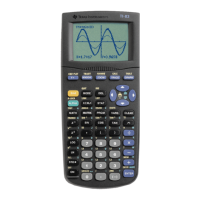
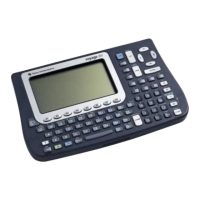
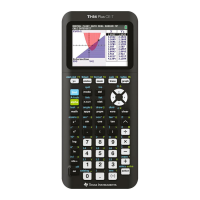
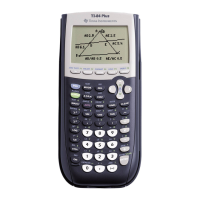
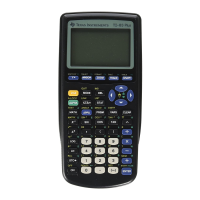
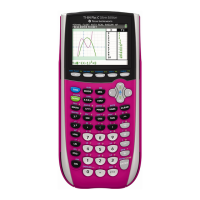
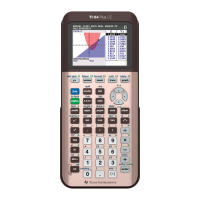
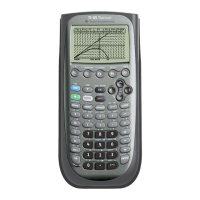



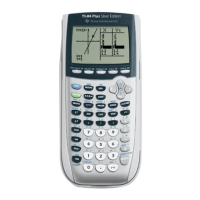
